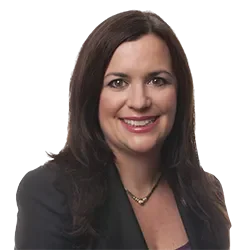ASAP
NY Court of Appeals Decision Saves the NY Home Care Industry – What’s Next for Home Care Providers?
New York’s vast home care industry and those who rely on their services breathed a sigh of relief on March 26, 2019, when the New York Court of Appeals gave providers the green light to continue to pay home care aides for 13 hours of a 24-hour shift, so long as they are afforded eight hours for sleep breaks (five of which are uninterrupted) and three hours for meal breaks. The court’s decision in Andryeyeva v. New York Health Care, Inc. and Moreno v. Future Care Health Services, Inc.,1 reversed lower appellate court and trial court rulings that refused to give deference to the New York Department of Labor’s (NY DOL) interpretive guidance of its Wage Order, and instead directed that home care aides be paid for every hour of a 24-hour shift, regardless of breaks. The Court of Appeals remanded to the lower courts the issue of whether class action treatment of cases is appropriate, where home care aides allege that they do not receive the requisite sleep and meal breaks and are nonetheless paid for only 13 hours of a 24-hour shift.
A reverse outcome would have been devastating. Had the Court of Appeals upheld the decision by the lower appellate court and required home care agencies to pay home care aides for every hour of a 24-hour shift—resulting in unfathomable liability for unpaid overtime and minimum wages for the six-year statute of limitations period—most home care agencies would have been forced to close their doors and perhaps file for bankruptcy. This outcome would have left elderly and infirm New Yorkers without adequate care, and thousands of home care aides without jobs. This Insight will discuss the details of the Court of Appeals decision and its implications going forward.
Background2
The New York home care industry has faced collapse since a series of New York Appellate Division decisions invalidated the NY DOL’s policy and held that home care aides working 24-hour shifts who are employed by third-party agencies must be paid for every hour of the shift, prohibiting employers from deducting time for sleep and meal periods. The issue has been lurking for five years since the New York Supreme Court, Kings County, first issued its decision in Andryeyeva v. New York Health Care, Inc.3 In this case, the court held that the NY DOL’s March 11, 2010 Opinion Letter guiding home care agencies to pay home care aides for 13 hours of a 24-hour shift was not to be given deference. Around the same time, another case in the New York Supreme Court, Kings County, Moreno v. Future Care Health Services, Inc.,4 was decided. In Moreno, the judge gave deference to the NY DOL and refused to certify a class of home care aides who claimed they were not paid for every hour of a 24-hour shift, holding that individual inquiries were necessary to establish whether each plaintiff received adequate sleep and meal periods, such that exclusion of those periods from a compensable 24-hour shift was appropriate. Both decisions were appealed and heard together by the Appellate Division, Second Department (“Second Department”) and ultimately the Court of Appeals. The Second Department held that home care aides were entitled to be paid for every hour of a 24-hour shift, regardless of whether they were afforded sleep and meal periods. In so holding, the court refused to give deference to the NY DOL’s interpretative guidance.5 The Second Department also reversed the Moreno decision, holding that class treatment was appropriate for the claims of unpaid wages by home care aides working 24-hour shifts, because the NY DOL’s interpretive guidance was erroneous.6
The Court of Appeals Decision
Compensation for 24-Hour Shifts
In her introductory paragraph, Justice Jenny Rivera, writing for the majority of the court, provided the decision in a nutshell:
[NY] DOL has interpreted its Wage Order to require payment for at least 13 hours of a 24-hour shift if the employee is allowed a sleep break of at least 8 hours – and actually receives five hours of uninterrupted sleep – and three hours of meal break time. DOL’s interpretation of its Wage Order does not conflict with the promulgated language, nor has DOL adopted an irrational or unreasonable construction, and so the Appellate Division erred in rejecting that interpretation. Therefore, we reverse the Appellate Division orders and remit for consideration of alternative grounds for class certification….
As the Court of Appeals noted, the plaintiffs incorrectly argued that home care aides employed by third-party agencies are not “residential” employees and, thus, sleep and meal periods cannot be deducted from their pay. The plaintiffs relied on a portion of the NY DOL’s Miscellaneous Wage Order that states:
the minimum wage shall be paid for the time an employee is permitted to work, or is required to be available for work at a place prescribed by the employer, … However, a residential employee – one who lives on the premises of the employer – shall not be deemed to be permitted to work or required to be available for work: (1) during the employee’s normal sleeping hours solely because the employee is required to be on call during such hours; or (2) at any other time when the employee is free to leave the place of employment.
In its March 11, 2010 Opinion Letter, the NY DOL provided guidance regarding the application of the Wage Order to home health care aides, including the calculation of hours worked when assigned to a patient’s home. The Opinion Letter distinguishes between employees who are considered to be “on-call” (working during all hours they are required to remain in a particular work area) and employees who are “subject to call” (those who are able to leave the work area between assignments and are paid only for work performed). The NY DOL held that it treats all live-in employees the same, regardless of whether they are “residential” or “non-residential.” They are both considered to be “subject to call” and must be paid only 13 hours of a 24-hour shift so long as the aforementioned conditions apply (i.e., they receive eight hours for sleep breaks, five of which are uninterrupted, and three hours for meal breaks). Notably, according to the NY DOL, if the home health care aide does not receive a minimum of five hours uninterrupted sleep and work-fee meal breaks, the employer must pay for every hour of a 24-hour shift—meaning the employer cannot exclude 11 hours from the total compensable hours.
The Court of Appeals explained that it must “defer to an administrative agency’s rational interpretation of its own regulation in its area of expertise.” Thus, an agency’s construction of its regulations “if not irrational or unreasonable, should be upheld.” The court noted further that “[j]udicial deference to an agency’s interpretations of its rules and regulations is warranted because, having authored the promulgated text and exercised its legislatively delegated authority in interpreting it, the agency is best positioned to accurately describe the intent and construction of its chosen language.” The Court of Appeals found that “the construction at issue here has been followed for a long period time and thus, is entitled to great weight and may not be ignored.”
According to the Court of Appeals, although the Wage Order does not define what it means for an employee to be “required to be available for work at a place prescribed by the employer,” the NY DOL has interpreted the phrase as applied to all employees assigned to 24-hour shifts to exclude from compensable hours up to 11 hours for sleep and meal breaks, based on DOL’s understanding that these are “regularly scheduled substantial periods of assignment-free personal time.” The court held that this interpretation is not inconsistent with the plain language of the Wage Order, and it is not irrational or unreasonable.
The Court of Appeals further explained that an employee must be paid the minimum wage for the time when they are “required to be available for work at a place prescribed by the employer.” This, the court found, requires both “presence” and an “availability” during a time scheduled for actual work. The court held the plaintiffs mistakenly argued, and the Appellate Division erroneously concluded, that once a worker is physically present at the designated work site, they are thus able to work if called upon and so are “available for work.” The NY DOL has interpreted the phrase “available for work” in in the context of a 24-hour shift to exclude the hours the employee is not working because the employee is on a scheduled sleep or meal break.
In giving deference to the NY DOL’s interpretation, the Court of Appeals noted the DOL’s consistent and lengthy interpretation of the proper compensation for an employee “subject to call” is entitled to deference, and the NY DOL’s interpretation, based on the industry reality that if a patient requires full-time attention and care, two home health aides are, or ought to be, assigned to separate 12-hour shifts. It was also noted that the NY DOL has an interest in conforming state and federal guidance on the proper calculation of compensable hours. Interpreting the Wage Order to exclude sleep and meal breaks in a 24-hour shift is consistent with the federal approach.
Class Certification
The Court of Appeals next considered defendants’ argument that individual issues preclude class certification in these types of cases. Defendants claim that each putative class members’ claim is fact-specific and turns on whether the individual health care aide received the requisite number of uninterrupted sleep and meal hours, so plaintiffs may not offer generalized proof on a class-wide basis.
The court noted that plaintiffs allege there is evidence of defendants’ systemic violations of the Wage Order and Labor Law, which may be appropriate for class certification, as a policy or practice of unlawful action may be ripe for class certification. The court stated that an argument that damages may vary amongst the plaintiffs also does not preclude class certification.
However, the court did not reach a conclusion on the class certification issue, in light of the court’s decision to uphold the “13-hour rule.” Instead, the court sent the cases back to the lower courts, so they could consider in the first instance whether there is still a basis for class certification.
Implications of the Decision
As the Court of Appeals specifically noted, if an employee does not receive the “minimum break time because the patient needs assistance, the aide is paid for 24 hours of work time.” In fact, the court, citing the NY DOL’s interpretation, stated that not providing a home care aide with the minimum sleep and meal breaks is a “hair trigger that immediately makes the employer liable for paying every hour of the 24-hour shift, not just the actual hours.” This means that compliance is key to avoiding a NY DOL investigation or a lawsuit. Employers must have in place established policies and practices for tracking meal and sleep periods, as well as a policy and practice for home care aides to report times when they are not able to take their sleep or meal breaks. Employers should also have “live-in agreements” establishing these policies and practices, and obtaining the employee’s agreement to comply with them.
The class action treatment of such claims is unsettled. Thus, employers should consider whether to implement arbitration programs in the event the courts determine there still is a basis to obtain class certification.
Finally, it is important not lose sight of the many other wage and hour claims employees may potentially bring. This is a perfect opportunity for employers to have their employment practices audited for compliance, and to make any necessary changes to ensure they are using recommended practices and complying with all applicable wage and hour laws.

